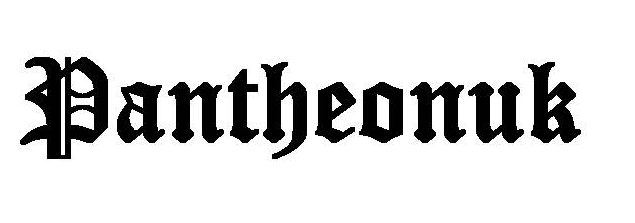Most small businesses lose money on Google Ads not because their ads are weak, but because their landing pages are not built to convert. Even a well-targeted campaign can fail when the landing page loads slowly, feels unclear, or confuses the visitor with too many choices.
Research from PPC performance studies shows that fixing core landing-page issues alone can reduce cost per lead by 30–50%, without increasing the ad budget. For small businesses spending 3,000–10,000 AED per month on Google Ads, poor landing pages can waste thousands every quarter. The best part is that improving a landing page does not require a big team or technical expertise.
It only requires focus on elements that directly influence customer behavior: clarity, speed, trust, simplicity, and friction-free conversions. According to internal performance reviews shared by a leading google ads management company in Dubai, these factors consistently have the strongest impact on reducing cost per lead and improving overall conversion rates for small businesses. The sections below highlight practical fixes that small businesses can implement quickly to improve performance and get more value from every click.
Fix 1: Make the Landing Page Load in Under 2 Seconds
A slow page harms both user experience and Google Ads Quality Score. More than half of visitors leave if a page takes longer than three seconds to load, which increases bounce rate and pushes CPC higher.
To improve loading speed, small businesses should focus on:
- Compressing and resizing large images
- Removing unused plugins, scripts, and add-ons
- Reducing heavy animations, sliders, and pop-ups
- Switching to faster, lightweight hosting
- Using a clean theme or builder with fewer visual elements
- Running PageSpeed Insights and fixing the biggest issues first
These changes do not require a developer. Even minor improvements often generate immediate gains: lower bounce rates, stronger engagement, higher Quality Scores, and reduced wasted spend.
Fix 2: Match the Landing Page Message Exactly With the Ad
One of the easiest and most effective improvements is aligning ad text with the landing page. When a visitor clicks an ad that promises something specific, they expect the landing page to repeat the same promise clearly.
Here is exactly what small businesses should do:
- Copy the main ad headline into the landing-page headline
- Repeat the offer or benefit (discount, free consultation, fast service) at the top
- Use the same keywords in the first sentence or intro text
- Ensure the CTA reflects the action promoted in the ad
- Remove anything that contradicts or dilutes the promise
This consistency builds trust and dramatically improves Quality Score, lowering CPC and increasing conversions without increasing the budget.
Fix 3: Add Clear, Simple, and Visible Calls to Action
Many landing pages bury the CTA or use vague button text. Google Ads traffic requires clarity and speed.
Improve CTAs by:
- Placing a primary CTA above the fold
- Repeating the CTA in the middle and at the end of the page
- Using direct, simple language like:
- “Book Your Free Consultation”
- “Get a Quick Quote”
- “Schedule Your Visit”
- Adding a supporting micro-benefit like “Get Same-Day Response”
- Making the button large, clean, and easy to click
- Avoiding vague CTAs like “Submit,” “Learn More,” or “Contact”
These changes reduce friction and guide visitors toward a clear action.
Fix 4: Reduce Distractions and Remove Unnecessary Elements
Too many elements compete for attention on most small business landing pages. Simplifying the page helps visitors focus on the main offer.
Remove distractions such as:
- Top navigation menus
- Unrelated service pages
- Blog posts and article boxes
- Large footers with multiple links
- Pop-ups not related to the offer
- Sidebar elements
- Sliders, animations, or galleries that slow the page
What should remain on the page:
- The offer
- The benefits
- The trust signals
- The conversion form
- The CTA
- A short explanation of the service
A simplified page improves conversion rate by keeping the visitor focused.
Fix 5: Add Trust Signals That Answer Real Customer Doubts
Trust is one of the biggest conversion barriers for small businesses. People who click Google Ads don’t know the business yet, so they hesitate — unless trust is built quickly.
Add trust signals such as:
- Real customer reviews (not generic text)
- Before-and-after examples (when relevant)
- Case studies or short success stories
- Certifications, licenses, or recognition
- Real photos of staff, office, or equipment
- Guarantees or clear policies
- Short explanation of what happens after form submission
These elements reduce anxiety, increase credibility, and support the CTA.
Fix 6: Use a Streamlined Form That Only Collects Essential Information
Long forms reduce conversions. Google Ads users want quick, low-commitment actions.
Optimize your form by:
- Asking only for essential fields:
- Name
- Phone number
- Service type or brief message (optional)
- Removing extra fields like address, budget, comments, or secondary contacts
- Using dropdowns or checkboxes instead of text fields
- Making the form visible without scrolling
- Adding a confirmation message (“We reply within 10 minutes”)
- Testing the form on mobile to ensure speed and clarity
Shorter forms consistently increase submission rates.
Landing Page Fix Impact notes:
| Landing Page Fix | Common Problem It Solves | Typical Improvement For Small Businesses | Reason It Works |
| Faster Loading (Under 2 Seconds) | High bounce rates due to slow pages | 10–40% more conversions | Reduces abandonment and improves Quality Score |
| Matching Ad Message to Page | Visitor confusion | 15–30% lower cost per lead | Higher relevance and clearer expectations |
| Clear CTA Placement | Hidden or unclear actions | 10–25% more leads | Minimizes decision friction |
| Removing Distractions | Too many exit points | 20–30% higher conversion rate | Keeps focus on the offer |
| Adding Trust Signals | Lack of credibility | 10–35% more inquiries | Reduces hesitation |
| Shorter Forms | Form abandonment | 15–40% higher submission rate | Requires less effort |







